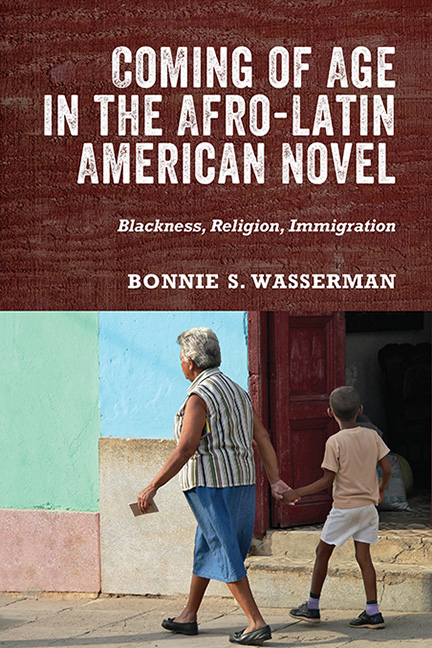Book contents
- Frontmatter
- Contents
- Introduction
- 1 The Intergenerational Bildungsroman in Daughters of the Stone and Ponciá Vicencio
- 2 The Epistolary Afro-Cuban Bildungsroman
- 3 Boys to Men: Masculinity in The Brief Wondrous Life of Oscar Wao and City of God
- 4 Reinventing the Afro-Latin American Bildungsroman
- Conclusion
- Bibliography
- Index
2 - The Epistolary Afro-Cuban Bildungsroman
Published online by Cambridge University Press: 16 July 2022
- Frontmatter
- Contents
- Introduction
- 1 The Intergenerational Bildungsroman in Daughters of the Stone and Ponciá Vicencio
- 2 The Epistolary Afro-Cuban Bildungsroman
- 3 Boys to Men: Masculinity in The Brief Wondrous Life of Oscar Wao and City of God
- 4 Reinventing the Afro-Latin American Bildungsroman
- Conclusion
- Bibliography
- Index
Summary
When Gracielita, a key character in Letters to My Mother, joins the hundreds of thousands of Cubans that cross the Florida Straits during the Mariel Boatlift she had no idea how her life would change. Her boyfriend had convinced her that life in Cuba no longer held promise after the revolution and going to the United States would offer more opportunities. Unfortunately for her, she does not find a better life and instead encounters racism, especially from Cubans who immigrated in earlier waves, and is unable to find work with her advanced degree from an Eastern Bloc country. In letters to loved ones back home, Gracielita describes how her life as an émigré evolves first in Miami and later in Washington, DC. With each correspondence, a group of women in Cuba eagerly looks forward to the descriptions of her life abroad. The Maids of Havana, written by Pedro Pérez Sarduy thirty years after the Mariel Boatlift, offers a reexamination of Mariel, again using the epistolary form.
The coming-of-age novels featured in this chapter on the Afro-Cuban bildungsroman are distinctive in the way they marry a unique narrative format with strong historical allusions. While bildungsromans typically address the journey of a child, the genre is generally not considered to be for children. Letters to My Mother (2006) by Teresa Cárdenas, however, was written as a young adult book that was also read by adults in Cuba and in translations around the world. Moreover, this book and The Maids of Havana (2010) by Pedro Pérez Sarduy are epistolary (correspondence-based) novels. According to Deborah Kaplan, in epistolary novels “stories emerge out of the discourse of identifiable correspondents, [and] are completed collectively in the mosaic of their communications.” Correspondence-based novels first appeared in eighteenth-century England and France, where they were associated primarily with female protagonists. Epistolary novels, though, have not been limited to Europe, and two examples of well-known twentieth-century epistolary novels in Africana letters are The Color Purple (1982) by Alice Walker and So Long a Letter (1989) by the Senegalese author Mariama Ba. While The Color Purple is an epistolary coming-of-age novel, So Long a Letter addresses common themes of African diasporic literature.
- Type
- Chapter
- Information
- Coming of Age in the Afro-Latin American NovelBlackness, Religion, Immigration, pp. 55 - 89Publisher: Boydell & BrewerPrint publication year: 2022



